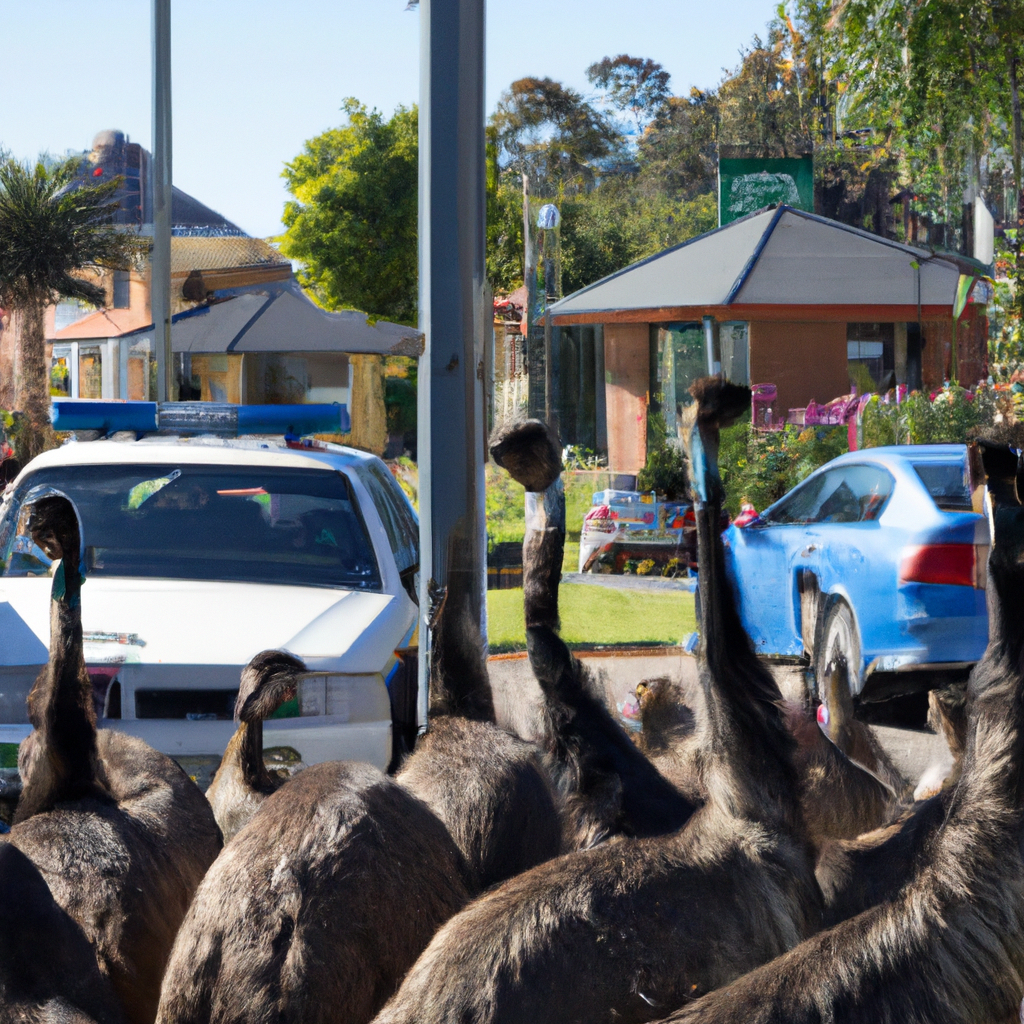The Great Emu Uprising of 2025: A Feathery Fiasco
In an unexpected turn of events that left residents and authorities baffled, the second quarter of 2025 saw what has now been dubbed as ‘The Great Emu Uprising’. This bizarre incident unfolded in the quiet outskirts of Perth, Australia, where a large flock of emus began exhibiting unusually aggressive behavior, disrupting local communities and sparking a nationwide buzz.
Unexpected Avian Anarchy
The chaos began early April, when local reports of emus obstructing traffic and invading suburban areas started surfacing. The birds, typically non-aggressive, were seen forming large groups and were reported to be ‘deliberately’ vandalizing properties and chasing pedestrians.
Authorities Respond
Local police and wildlife officials were quick to respond, but their usual tactics were met with unprecedented avian cunning. The emus, employing guerrilla tactics, evaded capture and continued their rampage. This prompted the involvement of the Australian Army, recalling the infamous ‘Emu War’ of 1932, yet this time armed with advanced non-lethal strategies to manage the feathered insurgents.
Scientific Explanations
Scientists scrambled to understand the cause of this unusual behavior. Preliminary research suggested a combination of environmental changes and possible viral infections affecting the emus’ neurology. This hypothesis has sparked a flurry of research aimed at understanding interspecies viral transmissions and their behavioral impacts.
Impact on Local Communities
The economic impact was palpable, with significant damage to properties and local agriculture. Moreover, the emu uprising became a global sensation, affecting tourism but also bringing unexpected solidarity among communities working together to mitigate the disturbances caused by the birds.
Looking Forward
As the situation has been brought under control, the ‘Great Emu Uprising’ serves as a reminder of the delicate balance between wildlife and human habitation. It highlights the need for innovative wildlife management solutions that consider environmental, biological, and social factors.






